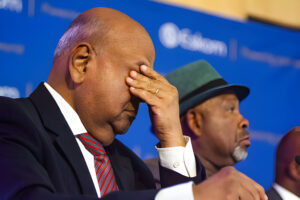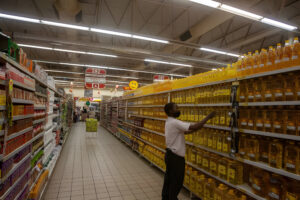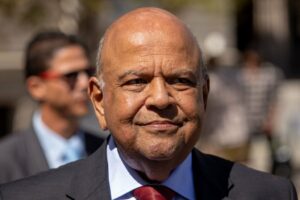South Africa, the jewel of sub-Saharan Africa in terms of economic development, is currently facing an alarming unemployment rate nearing 33%. With the United Nations and various experts sounding the alarm, describing the situation as a potential “time bomb” that could lead to political unrest, the nation’s socio-economic fabric is under significant strain.
The Youth at the Forefront of the Crisis
The youth, who represent the future of any nation, are particularly hard-hit. Over half of South Africa’s younger generation is without work. This grim statistic not only amplifies the growing poverty and inequality but also contributes to societal challenges such as increased crime rates and drug use among the youth.
While the global COVID-19 pandemic has wreaked havoc on economies worldwide, South Africa has felt its impact profoundly. Over 2 million jobs have been lost since the onset of the pandemic. However, it’s essential to note that the country’s unemployment issue predates this global health crisis. For instance, Themba Khumalo, a former machine operator, has been unemployed since 2017. Today, he scavenges for metal and plastic containers to sell for recycling, struggling to provide for his family on the meagre $18 monthly unemployment benefit.
Khumalo’s story is not unique. From Pretoria to Johannesburg, many qualified graduates find themselves in menial jobs or resorting to recycling to make ends meet. Khumalo’s sentiments echo the frustration of many: “At the end of the day, the graduates come back home and sit doing nothing in the township. I blame the government.”
The upcoming 2024 general elections will undoubtedly see unemployment as a central issue. The daily power blackouts due to the electricity crisis only add to the challenges the nation faces.
Lebohang Mphuthi, a 26-year-old in Pretoria, exemplifies the struggle of many young professionals. Despite holding a diploma in analytical chemistry, she works as a student assistant at a public school, earning $265 per month. In the broader South African context, she might be considered one of the fortunate ones.
The 2024 Elections: Unemployment Takes Center Stage
The official unemployment statistics might not even capture the full extent of the crisis. Analysts suggest that if we were to include those who’ve given up on job hunting, the actual unemployment rate could be closer to 42% of the working-age population. The World Bank has highlighted South Africa as having the world’s highest unemployment rate, even surpassing regions like Gaza, the West Bank, Djibouti, and Kosovo.
The government’s strategy to address this includes supporting young entrepreneurs in starting businesses. However, Pearl Pillay from the Youth Lab think-tank points out that many of these new ventures struggle to take off or sustain themselves. The economic environment, she notes, doesn’t adequately support entrepreneurship, making South Africa one of the most challenging places to do business.
The urgency of the situation was palpably felt when Gauteng’s premier promised to hire 6,000 unemployed youths. The response was overwhelming, with over 40,000 braving the winter cold to queue for applications.
Economic Growth: The Key to Alleviating Unemployment
The U.N.’s warning about the “time bomb” of unemployment in South Africa harks back to a tragic week in 2021. Riots and looting during that period resulted in the deaths of over 350 individuals, marking the country’s most severe violence since the apartheid era’s final days.
For South Africa to begin addressing its unemployment crisis, financial analyst Duma Gqubule suggests that the nation’s GDP needs to grow by 6% annually. This growth rate would accommodate the 700,000 individuals entering the workforce each year. However, the country’s economic growth has been sluggish, with projections indicating a growth of less than 1% this year and only between 1% and 2% in the subsequent five years.
The challenges are evident, and the solutions complex. As South Africa navigates this tumultuous period, the resilience and spirit of its people will be tested. The nation’s future hinges on addressing this crisis effectively and sustainably.














